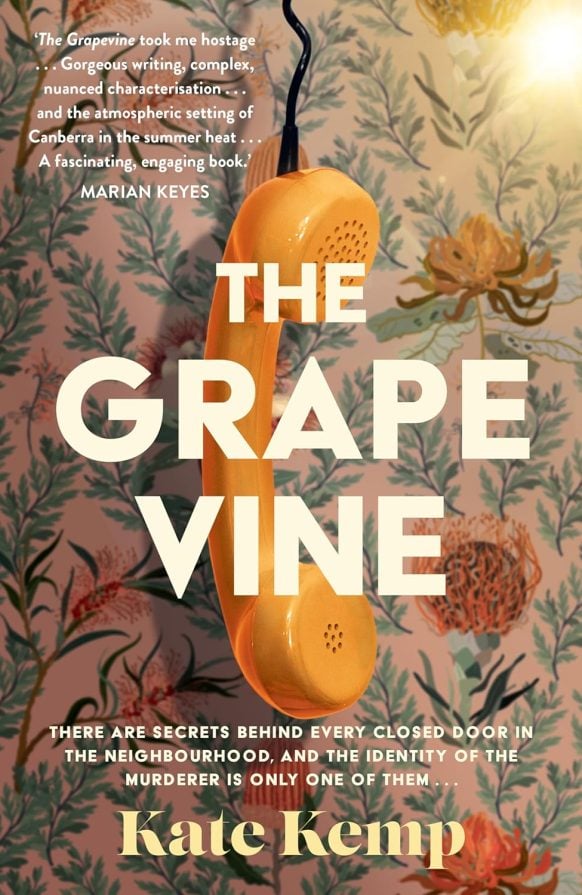The Grapevine by Kate Kemp
I am always excited to find a new (to me) Australian author whose writing is stylish and clever. The Grapevine, new and Australian, is an engrossing read. Its twists and turns kept me reading deep into the night, and as much for its unexpectedly engaging characters as for the convoluted weavings of its mystery plot.
Set in 1979 in the suburbs of Canberra – tellingly in a cul-de-sac – the characters circle each other, watching, spying, never able to escape their neighbours, even when they wander, dangerously, into the surrounding bushland (where a severed foot has been discovered).
The novel’s epigraph ends with the words: “ … we’re all falling into each other” (Amy Key), hinting at the way the characters are fatally entangled in the claustrophobic setting of their suburban deadend.
Everyone in the neighbourhood has secrets. They emerge bit by bit in the atmosphere of deep suspicion that surrounds an unexplained disappearance, and are further complicated by pre-existing prejudices and narrow-minded misunderstandings. These often misdirected suspicions are as intriguing as the actual crime and serve to throw up red herrings, but are also genuine, sometimes dark secrets festering away under cover of banal normality.
The characters are a mix of dyed-in-the-wool Aussies, blustering or neurotic; immigrants, some private others flamboyant; teenagers and kids, in family structures that are unconventional in one way or another; none what they seem on the surface.
Despite its young narrator, this is not a Young Adult novel. The author exploits 12-year-old Tammy’s mix of naivety and intelligent scepticism to ask questions the adults miss or avoid. Tammy researches the lives and doings of her ant colony simultaneously with the far more convoluted goings on of her neighbours, in the process uncovering frightening adult secrets, including those of her own parents and of her teenage neighbours (both the newly arrived with a hidden history, and the missing).
All the characters, with their dated Australian country-town expressions, and their naïve openness, even as they hide sometimes sinister secrets, are diverse and beautifully developed, both for the furthering of the story and for the engagement of the reader. In particular, Tammy, spying and putting herself and her younger friend, Colin, at risk. Tammy’s friendship with eight-year-old, innocently cross-dressing Colin develops from frustrated boredom to a gently protective dedication. Both are a triumph of character development. As is the slowly emerging, secretive Guangyu (“Gwarn You”) from China via Hong Kong, at first isolated by quiet suspicion on both sides, and blossoming bit by bit through an unexpected attraction.
I feel as though the crime was never meant to be as interesting as the perpetrator or the bit players. This is an engrossing, uniquely Australian book.
Reviewed by Judith Elen
Find this book in SMSA Library

